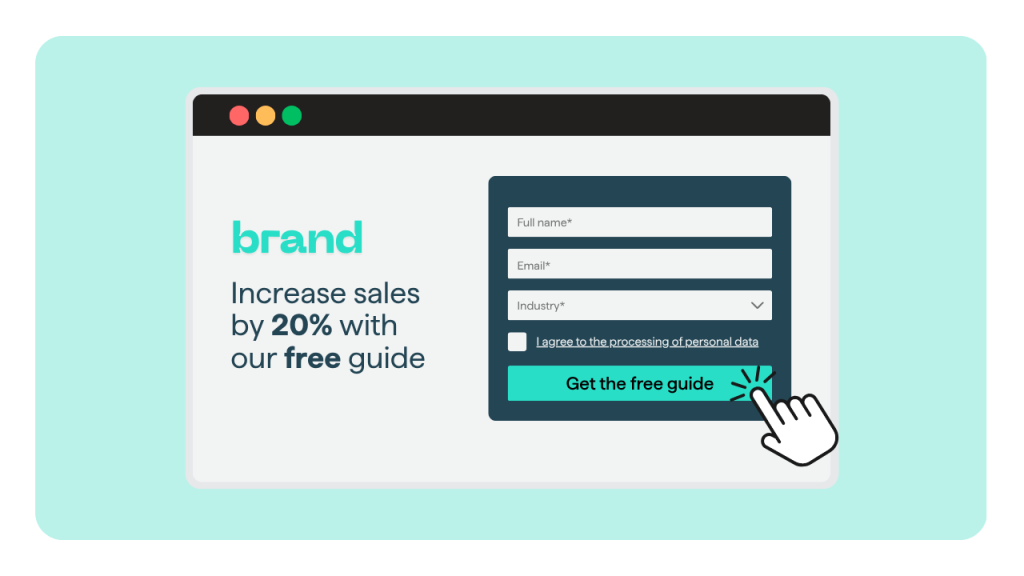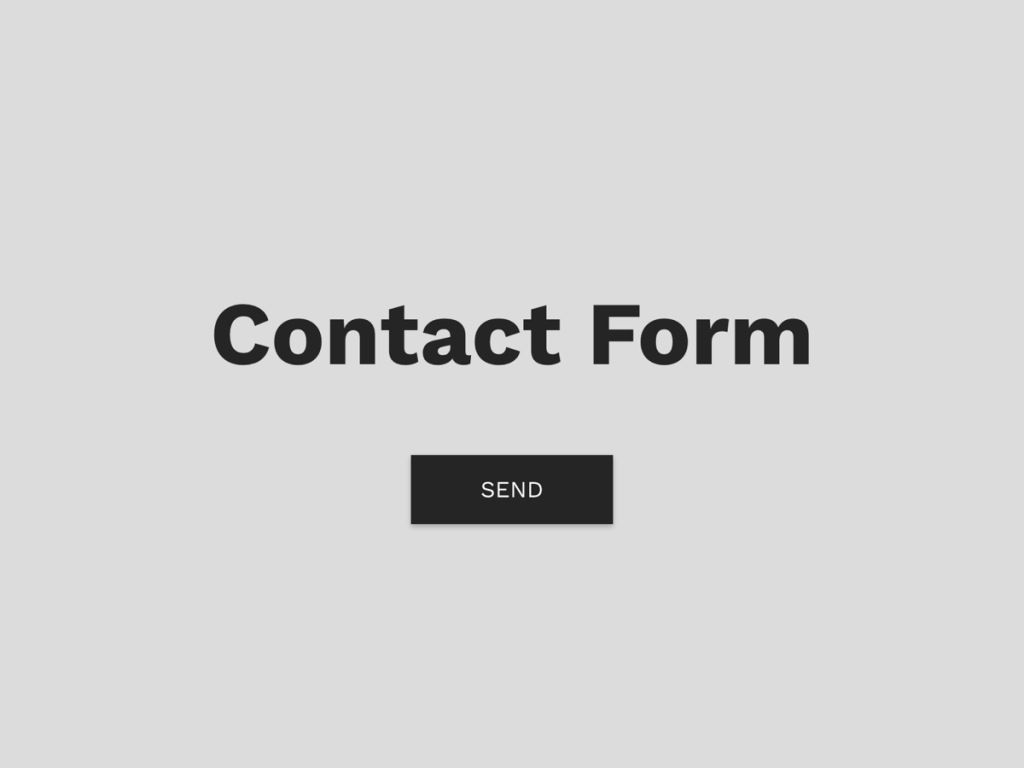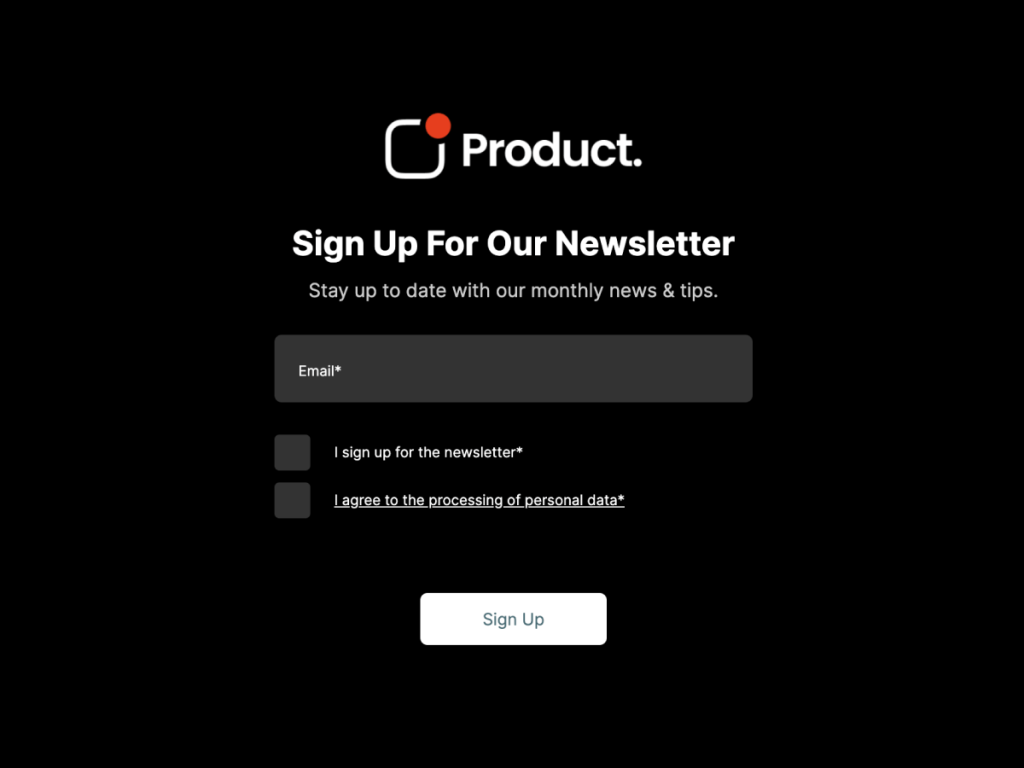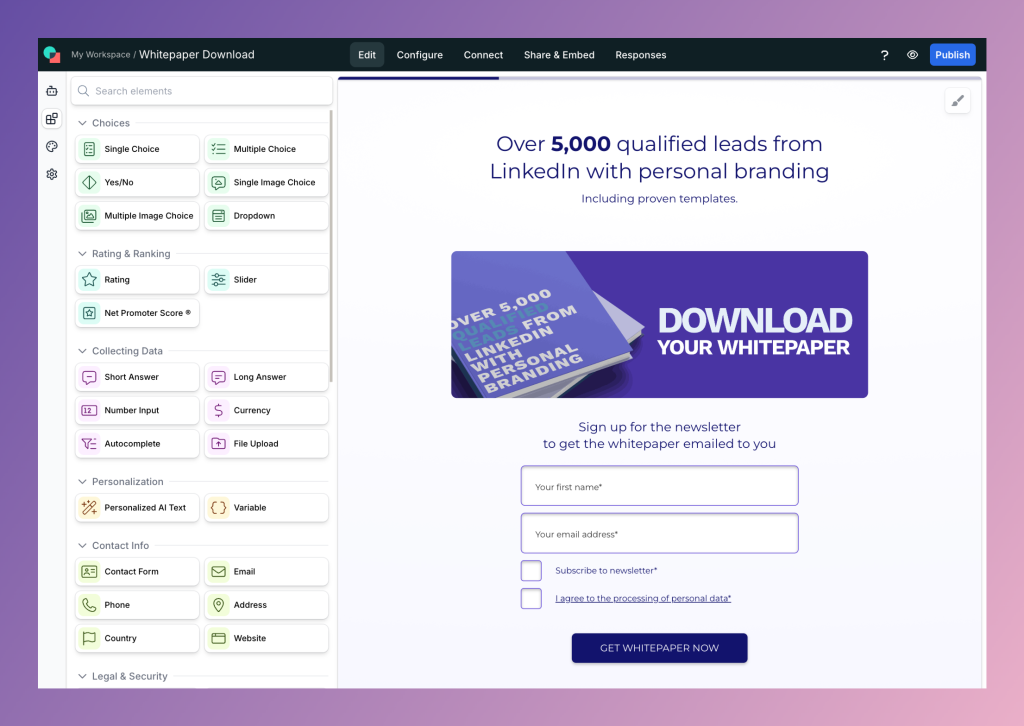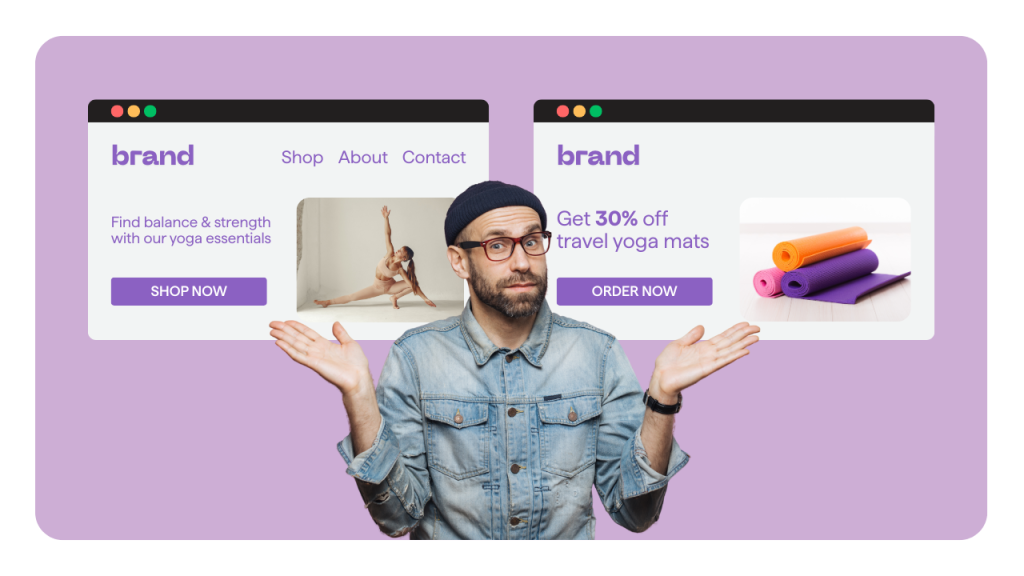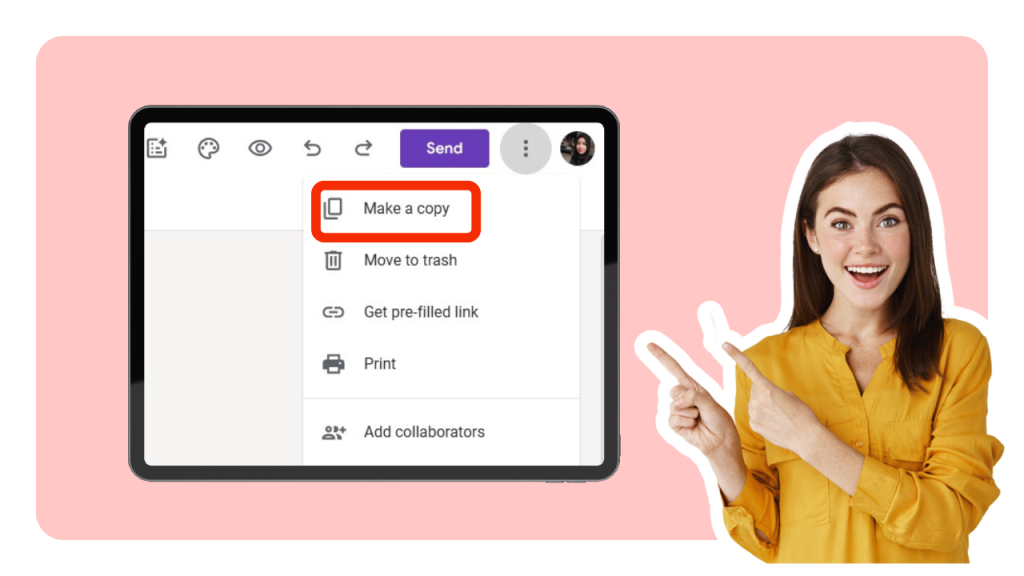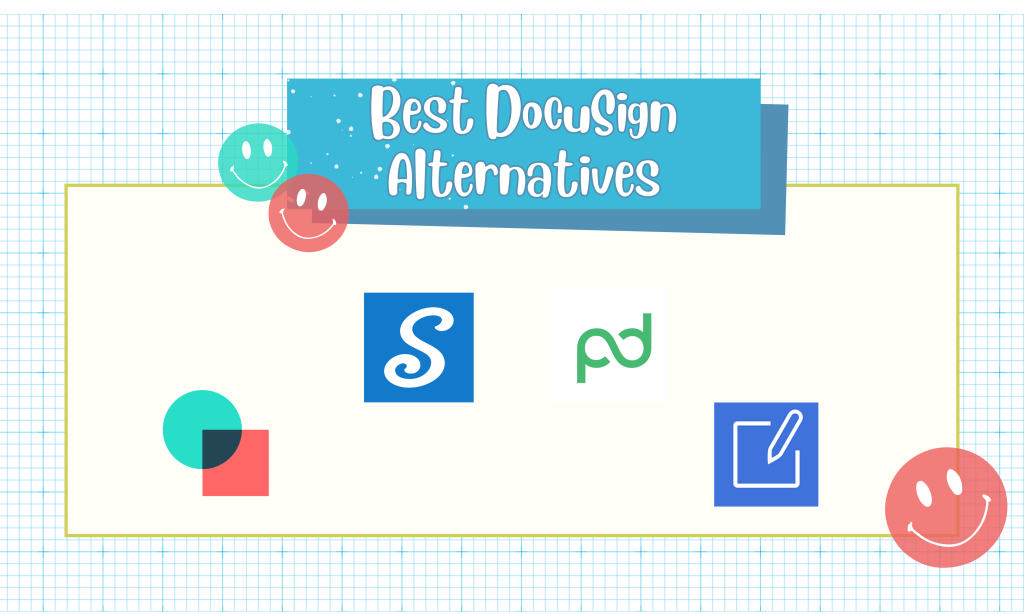Forms sit at the center of almost every digital marketing strategy you run. Lead gen, newsletter signups, free trials, demos, surveys, contests, account creation, event registrations: all of them rely on forms to collect data and move people to the next step.
Forms are commonly used across various websites for lead generation, signups, and other digital marketing activities, making them essential for capturing and managing user information.
According to a Hubspot research report, 74% of marketers say web forms, which are typically embedded on websites and serve as a primary way businesses interact with visitors online, are their top lead generation channel, ahead of social media and live chat. That means small changes to your forms can reshape your pipeline, conversion rate, and cost per lead.
You might already be building forms in tools like involve.me, HubSpot, Salesforce, or Google Forms. Still, the difference between a form that quietly leaks visitors and a form that converts at 20% or more comes down to a mix of strategy, design, copy, and data hygiene. Statistics from the market show that the median conversion rate for lead gen landing pages is 4.02%, while the top 25% hit 11.45% or higher.
This article shows you how to move closer to that top quartile by covering clear definitions, practical examples, and repeatable best practices.
What Is a Form in Digital Marketing?
Definition and Core Purpose
A form in digital marketing is a structured set of fields that collects information from users in exchange for a benefit. Online forms serve as digital documents, replacing traditional paper forms for efficient data collection. These digital documents are often created to request information from users, such as contact details or preferences. The benefit given in exchange can be a content asset, a free trial, a price quote, a callback, or simple access to a newsletter.
In simple terms, a form is the bridge between anonymous traffic and identified contacts in your CRM. When your form works well, more visitors cross that bridge and become trackable leads.
It's no surprise that almost 50% of marketers agree that web forms are very important to their marketing success.
Every form serves one primary purpose: to collect the minimum data needed to advance a user and your business to the next step. That might be moving someone from a blog post to a gated eBook, from a product page to a sales call, or from a social click to an email subscriber.
It is recommended to tailor form length to intent, with short “top of funnel” forms and more detailed “bottom of funnel” ones. For example, many B2B SaaS companies only ask for email on blog content forms, but ask 6 to 8 fields on demo request forms. You trade data depth for conversion rate, and the right balance depends on the offer.

How Forms Fit Into the Digital Marketing Funnel
As I've just explained, forms typically vary in length and complexity depending on the funnel stage, adapting to the user's intent and the information required.
Forms connect every stage of your funnel:
At the awareness stage, a simple newsletter form might capture 2% to 5% of visitors who read your content (Mailchimp benchmarks show an average 1.33% signup rate from landing pages, while top performers exceed 5%).
At the consideration stage, forms typically used for content download or webinars gather richer firmographic data.
At the decision stage, demo or quote forms send qualified leads straight to sales.
Each form should match the intent and information needs at its stage. Take a SaaS company offering workflow automation, for example:
At the top of the funnel, it might use a 2-field form (email and first name) for an automation checklist PDF. These forms are filled by users to provide the necessary information.
At the middle of the funnel, it can ask for company size and role in exchange for a webinar on automation ROI.
At the bottom of the funnel, a demo request form might go up to 7 or 8 fields, including budget range and implementation timeline.
Research shows that conversion rate typically drops as the number of form fields rises, with 3 fields converting about 10% higher than 7+ fields on average. That is why marketers phase data collection over multiple forms instead of asking everything at once. The entered data is then processed or used for further marketing actions.
Common Types of Forms in Digital Marketing
Lead Generation and Contact Forms
Lead generation forms are designed to turn visitors into leads by collecting contact details and basic profile information. Typical examples include “Contact sales,” “Get a quote,” “Download the guide,” or “Talk to an expert.” These forms usually ask for 3 to 10 fields, depending on the complexity of the product and the quality of leads you want. Less friction often leads to more form completions.
Contact forms serve a similar role but often support broader intent like support questions, partnership requests, or media inquiries. These forms act as a direct line between customers and your business, enabling straightforward communication and facilitating prompt responses and support.
A SaaS vendor might use a single “Contact us” form that routes to different teams based on a “What do you need help with?” dropdown. Statistics show that 74% of organizations say contact and lead forms directly feed their CRM or marketing automation tools.
Employees are typically involved in managing and processing the submitted information, ensuring inquiries are handled efficiently. When you design these forms, you are designing the front door of your pipeline and support workflows.
Signup, Registration, and Subscription Forms
Signup forms capture consent and details for newsletters, product accounts, events, or free trials. They tend to be short and benefit-focused, since any extra friction can cut your list growth.
Email service providers report that forms on dedicated signup landing pages can see conversion rates around 5% to 15%, while generic footer forms often convert under 1%. The difference in convertsion rates usually comes from a clearer value proposition and fewer required fields.
Registration forms may also trigger confirmation e-mails or be distributed as attachments in e-mails, making it easier to share and collect responses directly through email communication.
Event and webinar registration forms sit in this category as well. A typical B2B webinar form might ask for name, email, company, role, and sometimes a qualifying question like “What is your main challenge?”
Virtual events benchmarks show that registration conversion rates often range between 35% and 45% from landing page visitors to registrants.
Consider this example when deciding whether cutting on fields or not on this type of forms: a marketing team shortened its webinar form from 7 fields to 4 and increased registration rate by 18% in one month. The trade‑off in reduced data was worth the higher volume.
Key Components of an Effective Form
Fields, Labels, and Input Types
Each field on your form represents a small “cost” to the user. The higher the perceived cost, the lower your conversion rate.
Once again, we recommend removing any field you do not use in segmentation, lead scoring, or immediate follow‑up. Practical guidance from multiple studies supports a 3 to 7 field range for most mid‑funnel lead gen forms, with shorter forms for cold traffic. Your goal is to ask only what you can act on in the next 30 to 60 days.
Labels and input types also affect accuracy and completion. Clear top‑aligned labels often outperform placeholder‑only labels for accessibility and comprehension. In one Baymard Institute study, forms with visible labels improved completion time by around 15% on average.
Text boxes are a fundamental component of online forms, allowing users to enter freeform information and capture a wide range of data. But make sure to use appropriate input types like email, tel, date, and select menus to reduce errors. For example, a B2C insurance form that switched from open text fields to dropdowns for “coverage type” and “state” cut error rates by 22% and increased completed quotes by 9% in a quarter, according to a study.
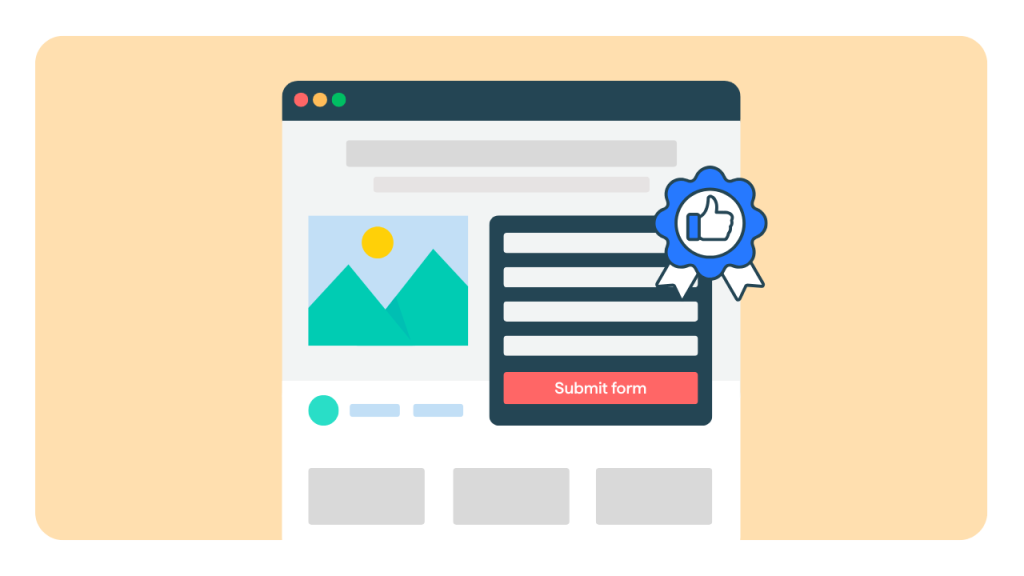
Calls to Action, Copy, and Error Handling
When users click the CTA button, they submit information, transmitting their data for processing, storage, or further action. It's the most important field of your form for conversion.
Your call to action (CTA) button text can increase or decrease conversions without any other change. In general, clear copy on what you get by clicking always beat a generic CTA copy. A test found that personalized CTA text like “Get my free quote” can outperform generic “Submit” buttons by 10% to 25% depending on the page.
Use active, benefit‑oriented language and match it to the offer: “Start my free trial,” “Send me the report,” or “Book my demo.” Keep the button color and size consistent with your brand, but high contrast with the background to improve visibility.
Error handling is also part of the user experience. Inline validation that tells users about mistakes in real time can reduce abandonment. Indeed, 67% of users abandon a form when they encounter complex validation errors or confusing error messages.
A simple example: a B2B SaaS company changed vague “Invalid input” error messages to specific guidance like “Please enter a business email, not a personal address” and saw a 12% increase in successful form submissions for their free trial over one month.
How Forms Impact Conversion Rate and Lead Quality
Form Length, Friction, and Conversion
Every extra field adds friction, and friction reduces submissions. The challenge is that you also need enough information for qualification and sales follow‑up. After submission, the collected data is typically stored in a secure database, allowing for future retrieval and analysis.
A study from HubSpot found that reducing form fields from four to three yielded a 50% increase in conversions in one test, while going above seven fields sharply reduced completion rates. The exact numbers depend on intent, but the pattern holds across industries: shorter forms convert more.
Here is a practical example. A mid‑market SaaS vendor cut its demo request form from 9 required fields to 5 by removing “phone number,” “industry,” “country,” and “budget range.” It then collected missing data through progressive profiling on later interactions. Over a quarter, demo request volume grew 27%, while the sales team reported only a small 3% drop in average lead qualification score.
This kind of trade‑off is common.
A/B testing tools report that businesses that run form experiments see an average 10% to 30% lift in form conversion within three to six months.
Lead Quality, Progressive Profiling, and Enrichment
Conversion rate alone does not tell the whole story. I know I've recommended to keep fields to a minimum several times in this article, but it's all about balance. If you cut all fields except email, you might double submissions but send sales a flood of unqualified leads.
Progressive profiling and data enrichment help you balance conversion and quality.
For example, a SaaS company selling to SMBs used progressive profiling on gated content forms. The first content download asked for email and first name only. The second one asked for company size and role. The third asked about primary use case. Over six months, this sequence increased overall content form conversion by 22% and still captured enough data for targeted campaigns and lead scoring.
According to a study, 53% of B2B marketers say they have seen higher lead quality when using progressive profiling compared with static form.
Best Practices for Building High‑Performing Forms
Strategic Planning, A/B Testing, and Measurement
Before you add or change a form, define its success metric and its role in your funnel. Is the goal raw volume, sales‑ready leads, event attendance, or product activation?
involve.me, along with tools like Google Analytics 4, Hotjar or Microsoft Clarity, can help you track form interactions, drop off points, and completion rates.
A/B testing should be part of your regular practice. Start with big swings: form length, CTA text, headline, offer framing. Then test smaller elements like field order or optional vs required fields. Campaigns that run at least 2 to 3 tests per month see compounding conversion gains that can total 20% or more over a year.
For example, one ecommerce brand tested hiding their phone number field behind an “Advanced options” toggle and increased completed forms by 14% while still collecting numbers from 40% of highly motivated users.
Data Quality, Validation, and Compliance
Good form design is not only about KPIs. It also protects data quality and legal compliance.
The email list provider Validity found that around 22% of email addresses entered in online forms are invalid or contain errors, spam traps, or other deliverability issues unless validation or verification is in place.
Use basic validation for format, required fields, and duplicates, and consider email verification tools if email is a key channel. Stronger data means better segmentation, higher deliverability, and more accurate reporting.
Note: with involve.me, you have several email validation options: You can simply activate OTP validation, prevent duplicate emails and block disposable or personal email addresses.
You also need to respect privacy laws such as GDPR, CCPA, and other regional regulations. For example, GDPR requires a clear legal basis for collecting personal data, explicit consent for certain uses, and easy withdrawal of consent. The European Commission notes that fines for serious GDPR infringements can reach up to 20 million euros or 4% of global annual turnover.
Practical steps include adding consent checkboxes where required, linking to a clear privacy policy, and avoiding pre‑checked boxes.
Note: with involve.me, you don't have to worry about compliance. You can add an op-in checkbox in one click. We are also SOC2 compliant, which means your customer data is safe with us.
Best Practices for High-converting Forms: Checklist
Limit forms to 3–7 essential fields for most lead gen use cases.
Use clear top‑aligned labels and visible error messages, validated inline.
Write benefit‑oriented CTA text tied to the outcome, not the action (“Get my demo”).
Design for single‑column, mobile‑first layouts with large tap targets.
Add short privacy notes and social proof near forms to build trust.
Use progressive profiling and enrichment to balance lead volume and data depth.
Track form performance and run A/B tests regularly to improve conversion.

When you apply these points, you systematize form improvement instead of treating each form as a one‑off task. Over time, even 5% or 10% gains per form stack across dozens of pages and campaigns, which can translate into hundreds or thousands of extra leads each quarter.
Strong forms give your marketing programs a reliable engine for turning attention into outcomes. Each aspect you refine - field count, layout, copy, trust, validation, and follow‑up - makes that engine more efficient. Forms might look simple, but they combine UX, psychology, compliance, and sales requirements in a few square inches of screen space. Treat them as core assets, keep testing, and align every form with a clear goal. You will see better conversion rates, cleaner data, and a pipeline your sales team actually wants to work.
How involve.me Helps You Build High-Performing Lead Generation and Qualification Forms
Everything above describes what high-quality forms should do. involve.me is built to operationalize those principles for lead generation and qualification forms, without requiring you to write a line of code.
Build Interactive Lead Funnels Instead of Static Forms
You can build simple, otimized forms with involve.me, but the platform shines for building interactive lead funnels where forms, quizzes, surveys, and calculators live in the same project, so you can collect data and qualify in one experience. The platform lets you build these assets with a drag and drop interface that controls layout, fields, design, and logic, so you can translate best practices from this guide into production without developer support.
Instead of a single static contact form, you can create multi step flows that warm up visitors, explain value, and then ask for details. Templates in the “generate and qualify leads” category already combine elements like lead capture fields, qualifying questions, and outcomes, giving you a starting point that has lead generation and qualification baked into the structure.
Qualify and Score Leads at the Point of Capture
Because involve.me supports conditional logic, you can show or hide questions, sections, or content based on previous answers. This means your form can act as a live decision tree, collecting only relevant data from each visitor and skipping unneeded questions, which reduces friction and improves completion rates.
Lead scoring is handled inside involve.me as well. You can assign scores to answers, use advanced calculations, and apply formulas that automatically calculate a lead score as the user responds. This turns your form into a real time pre qualification engine, where hot leads arrive in your CRM already tagged with scores and key attributes.
For industries that rely on pre screening, such as legal or professional services, embeddable interactive forms can generate significantly more qualified submissions than static alternatives, because they combine questions, guidance, and scoring in a single flow.
Connect Forms Directly to Your CRM and Email Tools
Lead capture is only useful if the data lands in the right systems. involve.me offers a broad integration layer with popular CRMs and email service providers, so your form submissions can create or update contacts, leads, and deals automatically. Native integrations cover tools like HubSpot, Salesforce, Pipedrive, Zoho CRM, and many others, as well as marketing platforms such as Mailchimp, Brevo, Klaviyo, Campaign Monitor, and more.
All of these integrations support custom field mapping, so you can send scores, preferences, and specific answers into dedicated properties in your CRM. That makes it easier for sales teams to filter by qualification thresholds, route leads to the right owner, and trigger tailored follow up sequences without manual data wrangling.
Publish As Landing Page, Embed, or Widget
To match the different use cases described earlier in the article, involve.me gives you several publishing options for your forms. You can launch a dedicated landing page for a lead magnet or webinar, embed forms inside existing pages, or use pop ups and widgets to capture abandoning visitors. All of these are built and controlled from the same no code builder.
This flexibility lets you align form presentation with funnel stage. For example, you can embed a short newsletter form in article templates, run a multi step qualification quiz as a standalone landing page, and trigger an exit intent widget that offers a lighter content upgrade before the visitor leaves.
Measure, Analyze, and Iterate with Built in Analytics
involve.me includes form and funnel analytics that show views, submissions, partial submissions, completion rates, and average time to finish for each project (amongst other metrics). You can export results or inspect individual contact profiles when you need more granularity.
Because these metrics live next to your form configuration, you can quickly see where drop offs occur and test improvements with built-in A/B testing, such as removing a field, changing copy, or adjusting logic. Combined with external tools like GA4 or your ad platform reporting, involve.me data becomes your telemetry layer for continuous form optimization.
Leverage AI to Accelerate Form and Funnel Creation
For teams that want to move faster, involve.me offers an AI form builder that generates branded lead generation forms from a prompt. The AI can combine form, quiz, survey, and calculator elements into a single experience, propose copy, and create personalized outcome pages. You can then refine the structure and wording in the drag and drop editor.
This reduces setup time for experiments. Instead of designing every form from scratch, you can generate a starting point, align it with the best practices in this article, and move straight to testing. That shortens the feedback loop between idea, implementation, and measurable results.
When to Use involve.me in Your Form Strategy
For simple, internal forms, a generic form tool may be sufficient. But when the goal is to generate and qualify leads with better data, lower friction, and integrated workflows, involve.me is built specifically for that use case. It combines interactive form building, lead scoring and logic, deep integrations, and analytics in one environment, so you can design the experience, capture the data, and orchestrate follow up from a single place.
Used alongside the best practices in this guide, involve.me lets you upgrade forms from static fields on a page to high intent capture and qualification machines that your sales and marketing teams can rely on.
Strong forms give your marketing programs a reliable engine for turning attention into outcomes. Each aspect you refine field count, layout, copy, trust, validation, and follow‑up makes that engine more efficient. Forms might look simple, but they combine UX, psychology, compliance, and sales requirements in a few square inches of screen space. Treat them as core assets, keep testing, and align every form with a clear goal. You will see better conversion rates, cleaner data, and a pipeline your sales team actually wants to work.
Build a high-converting form now
Sources
Forms Aren't Dead: The State of Email Lead Capture in 2020 - Hubspot
Form Statistics: Must-Know Data On Form Abandonments and Conversions - formstory
Email Marketing Benchmarks and Metrics Businesses Should Track - Mailchimp
7 Web Form Optimization Insights from Testing Hundreds of Forms - CXL
Ultimate Email Marketing Benchmarks for 2022: By Industry and Day - Campaign Monitor
Form Design: 6 Best Practices for Better E-Commerce UI - Baymard Institute
Dropdowns: Design Guidelines - Nielsen Norman Group
Which Types of Form Fields Lower Landing Page Conversions? - Hubspot

